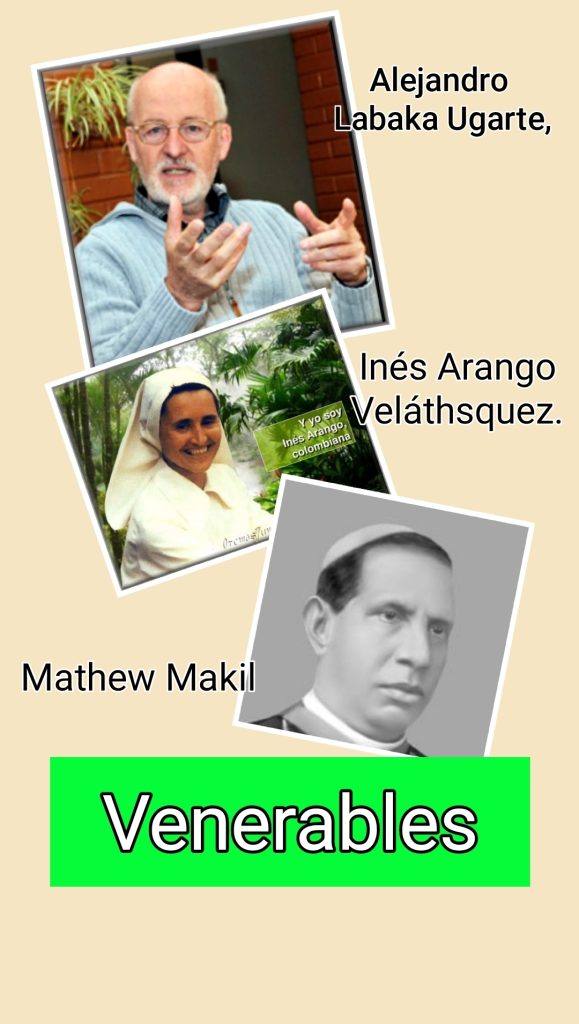
P. A. Chacko S. J.
Pope Leo XIV promulgated on May 22 the decree announcing the Church’s solemn recognition of three Venerables on the way to sainthood.
They are Spanish Bishop Alessandro Labaka Ugarte, Columbian Sister Agnese Arango Velásquez, and Indian Bishop Matthew Makil.
Bishop Ugarte and Sister Agnes were martyred while defending the rights of the indigenous people in Equador.
- Alejandro Labaka Ugarte. Ugarte was born in 1920 in Spain. He became a Capuchin and was ordained priest as Manuel in 1945. He went to China but, after ten years, he and other missionaries were expelled by the Maoist regime. Then he went to Equador and worked among the Huaorani and Tagaeri indigenous people.
He became a bishop in 1984. Aware of the invasion of oil companies in tribal areas, he and Sister Inés actively worked in negotiating for the rights of the Tribals.However, the tribals were suspicious of outsiders. He and
Sister Inés were killed with bows and arrows during a process of negitiation.
- Sister Inés Arango Veláthsquez.
Inés was born in Medellin (Colombia) in 1937. She joined the Capuchin Tertiary Sisters. She worked alongside Bishop Manuel in protecting the rights of the tribals.
- Bishop Matthew Makil, third Venerable.
Makil was born in 1851 in Manjoor, Kerala. After ordination, he worked in parishes and became Apostolic Vicar of Changanacherry in 1896 and subsequently became a bishop.
He founded a religious congregation, the Sisters of the Visitation of the Blessed Virgin Mary. The congregation’s primary aim was the education of girls.
Bishop Makil “actively promoted catechetical formation, school education, the creation of religious organizations and associations, and the fight against poverty which afflicted much of society at the time. He also encouraged vocations to consecrated life.”
When tension arose among two Christian rival communities, he worked for peace. Finally, he proposed to the Holy Sea the division of Changanassery vicariate into two segments: one for the southerners in Kottayam and the other for the northerners in Changanassery.
The southerners claimed to be successors of Mesapotamean migrants, while the northerners claimed to be St. Thomas Christians.
Pope Pius X accepted the proposal and established two vicariates in 1911, one for the southerners in Kottayam (knanaya Catholic) and one for the northerners in Changanassery (Syro-Malabar).
Bishop Makil was appointed Bishop of Kottayam Vicariate.
Bishop Makil tried to respond to certain crucial realities of the pople such as poverty.
He died after a brief illness in January 1914.
(Source: Vatican News)